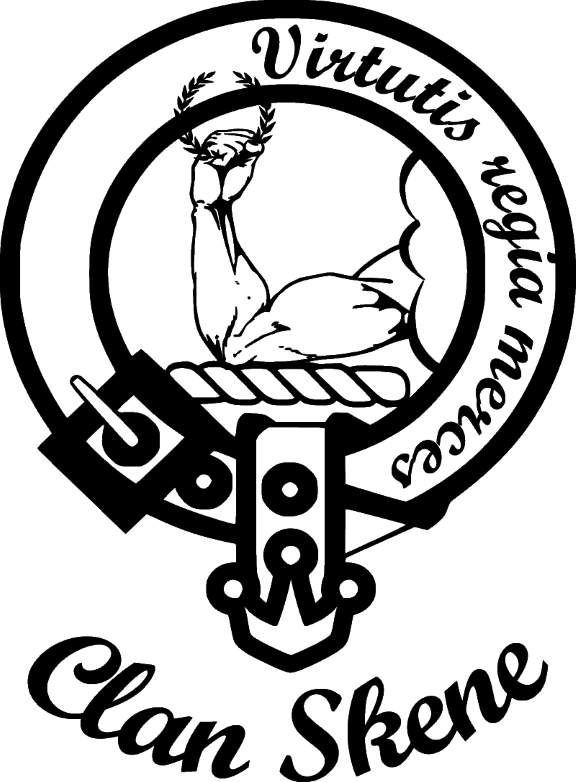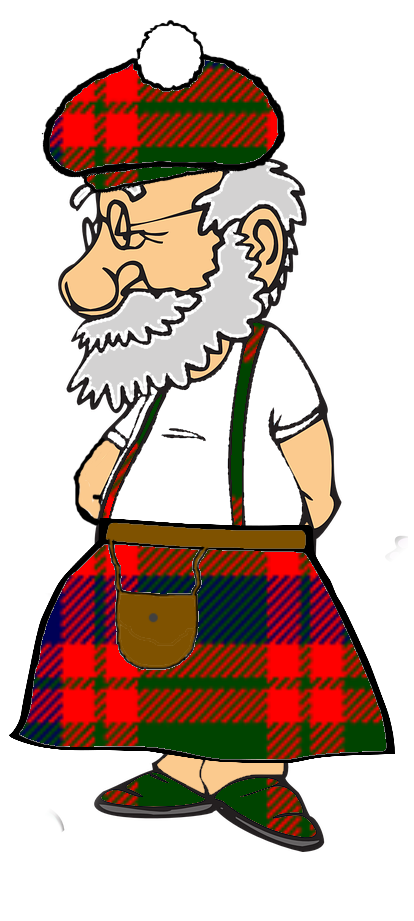Clan Skene
 Clan Skene is a lowland Scottish Clan originating in the Aberdeenshire district of Scotland. It is believed that Skene is derived from the Gaelic word Sgian which means dagger or knife. There is a legend that the younger son of the chief of Clan Robertson saved the life of the king from a wolf with nothing more than a knife. He was rewarded with the lands of Aberdeenshire and his family took the name of Sgian or Skene to honour their accomplishment. A more common belief is that the family took its name from the lands of Skene. The first recorded use of the name was John de Skene who forfeited his lands in the 12th century when he supported Donald Bane against Malcolm III of Scotland.
Clan Skene is a lowland Scottish Clan originating in the Aberdeenshire district of Scotland. It is believed that Skene is derived from the Gaelic word Sgian which means dagger or knife. There is a legend that the younger son of the chief of Clan Robertson saved the life of the king from a wolf with nothing more than a knife. He was rewarded with the lands of Aberdeenshire and his family took the name of Sgian or Skene to honour their accomplishment. A more common belief is that the family took its name from the lands of Skene. The first recorded use of the name was John de Skene who forfeited his lands in the 12th century when he supported Donald Bane against Malcolm III of Scotland.
The motto of the clan is Virtutis Regia Merces which translates into “A palace the reward of bravery”, and the clans crest features A dexter arm, from the shoulder, issuing from a cloud, holding forth a triumphal crown.
 The historic seat of the clan is Castle Skene is located near the village of Lyne of Skene, in Aberdeenshire. The Barony of Skene was granted to Robert Skene, 1st Laird of Skene, by Robert the Bruce in 1317. The Castle was build in the 14th century and a major extension was added in 1680 by the Skene family. In 1827 a female line of the Skene’s inherited the castle and they eventually sold it to the Hamilton Family in 1905. Upon Lady Hamilton’s death in 1985 her estate sold the castle. The current owner is Dr Nicolas Rennie.
The historic seat of the clan is Castle Skene is located near the village of Lyne of Skene, in Aberdeenshire. The Barony of Skene was granted to Robert Skene, 1st Laird of Skene, by Robert the Bruce in 1317. The Castle was build in the 14th century and a major extension was added in 1680 by the Skene family. In 1827 a female line of the Skene’s inherited the castle and they eventually sold it to the Hamilton Family in 1905. Upon Lady Hamilton’s death in 1985 her estate sold the castle. The current owner is Dr Nicolas Rennie.
The direct line of Clan Skene became extinct in 1827 upon the death of Alexander Skene who left no male heirs. In February 1994 it was determined that Danus George Moncrieff

Skene was the rightful chief of the clan. He was able to show direct descent from James Skene who died as chief in 1604 and therefore his line, Skene of Pitlour, were determined to be the most senior remaining line of the family by the Lord Lyon.
The Clan Skene Association is an organization whose mandate it is to cultivate fellowship among clan members based on their common clan roots.


